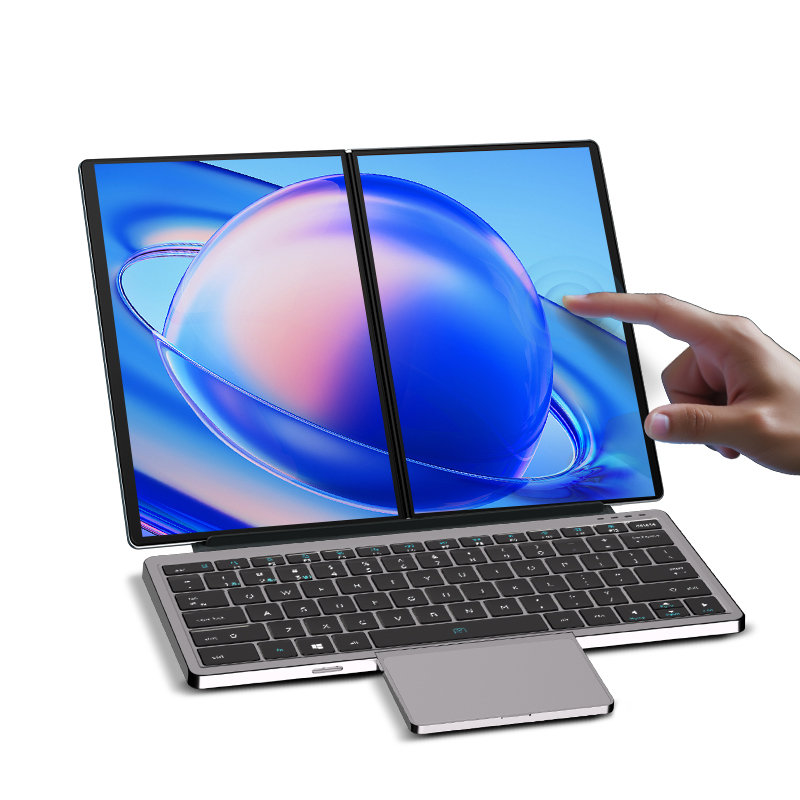Tablet Computers Selection Guide: Types, Features, Applications
2024-11-21
Tablet computers have revolutionized how we work, learn, and entertain ourselves, offering portability and versatility in a single device. With a wide range of options available, this guide will help you understand the types of tablets, their key features, and the applications they’re best suited for.
Types of Tablet Computers
1. Slate Tablets
- Description: The classic tablet design—lightweight, flat, and without a physical keyboard.
- Examples: Apple iPad, Samsung Galaxy Tab.
- Best for: Everyday use, media consumption, browsing, and casual productivity.
2. Convertible Tablets (2-in-1)
- Description: Devices that can function as both tablets and laptops, typically featuring detachable keyboards or 360-degree hinges.
- Examples: Microsoft Surface Pro, Lenovo Yoga Book.
- Best for: Professionals and students needing a balance of portability and productivity.
3. Gaming Tablets
- Description: Designed for gaming, these tablets feature powerful hardware, high refresh rates, and optimized graphics capabilities.
- Examples: ASUS ROG Flow Z13, Apple iPad Pro.
- Best for: Gaming enthusiasts who prioritize performance and visuals.
4. Kids' Tablets
- Description: Tablets designed with child-friendly features like durable cases, parental controls, and educational apps.
- Examples: Amazon Fire Kids Edition, LeapFrog Epic.
- Best for: Young children learning through interactive apps and games.
5. Rugged Tablets
- Description: Built for harsh environments, these tablets are resistant to water, dust, and shocks.
- Examples: Panasonic Toughpad, Samsung Galaxy Tab Active.
- Best for: Industrial workers, field technicians, and outdoor use.
6. E-Readers with Tablet Functions
- Description: Primarily designed for reading, but also include features for browsing and multimedia.
- Examples: Amazon Kindle Fire, Kobo Arc.
- Best for: Reading enthusiasts who want additional tablet capabilities.

Key Features to Consider
1. Display
- Size: Ranges from 7 inches (portable) to 13 inches (productivity-focused).
- Resolution: Look for high-resolution displays (Full HD, 2K, or 4K) for clear visuals.
- Panel Type: AMOLED for vivid colors, LCD for affordability.
2. Performance
- Processor: High-end processors like Apple M2, Snapdragon 8 Gen 2, or Intel Core are ideal for multitasking.
- RAM: At least 4 GB for basic tasks; 8 GB or more for heavy workloads or gaming.
3. Storage
- Ranges from 32 GB to 1 TB. Look for expandable storage options for added flexibility.
4. Battery Life
- Choose a tablet with a battery life of at least 8-10 hours for all-day use.
5. Operating System
- iPadOS: Optimized for apps and seamless integration with Apple devices.
- Android: Customizable and widely compatible.
- Windows: Ideal for work and productivity, with support for PC software.
6. Connectivity
- Options include Wi-Fi-only models and cellular (LTE/5G) for on-the-go internet access.
- USB-C and Thunderbolt ports provide faster data transfer and charging.
7. Accessories
- Stylus support (e.g., Apple Pencil, Samsung S Pen) for creative tasks and note-taking.
- Keyboard attachments for enhanced productivity.
8. Durability
- Premium models often use aluminum; rugged models feature reinforced materials for extreme conditions.
Applications of Tablet Computers
1. Productivity and Work
- Use Cases: Document editing, video conferencing, presentations.
- Recommended Features: Large display, multitasking capabilities, keyboard support.
2. Education
- Use Cases: Online classes, e-books, note-taking.
- Recommended Features: Stylus support, parental controls, strong battery life.
3. Entertainment
- Use Cases: Streaming, gaming, social media browsing.
- Recommended Features: High-resolution display, good speakers, powerful processors.
4. Creative Work
- Use Cases: Digital art, video editing, music production.
- Recommended Features: Stylus support, color-accurate display, powerful GPU.
5. Industrial and Fieldwork
- Use Cases: Inventory management, data collection, GPS navigation.
- Recommended Features: Rugged build, long battery life, GPS.
6. Health and Fitness
- Use Cases: Fitness tracking, telehealth apps, meditation.
- Recommended Features: Lightweight design, compatibility with fitness wearables.
Tips for Selecting the Right Tablet
1. Define Your Purpose
- Identify whether you’ll primarily use the tablet for work, study, gaming, or entertainment.
2. Set a Budget
- Premium tablets offer advanced features but cost more. Mid-range options balance performance and affordability.
3. Check Compatibility
- Ensure the tablet is compatible with existing devices and software (e.g., apps, printers).
4. Test Before Buying
- Visit a store to test the device’s responsiveness, display, and feel.
Conclusion
Tablet computers cater to a variety of needs, from professional productivity to casual entertainment. By understanding the types, features, and applications, you can select a device that aligns perfectly with your requirements. Whether you need a lightweight slate for reading, a convertible for work, or a rugged device for outdoor tasks, there’s a tablet for everyone.


